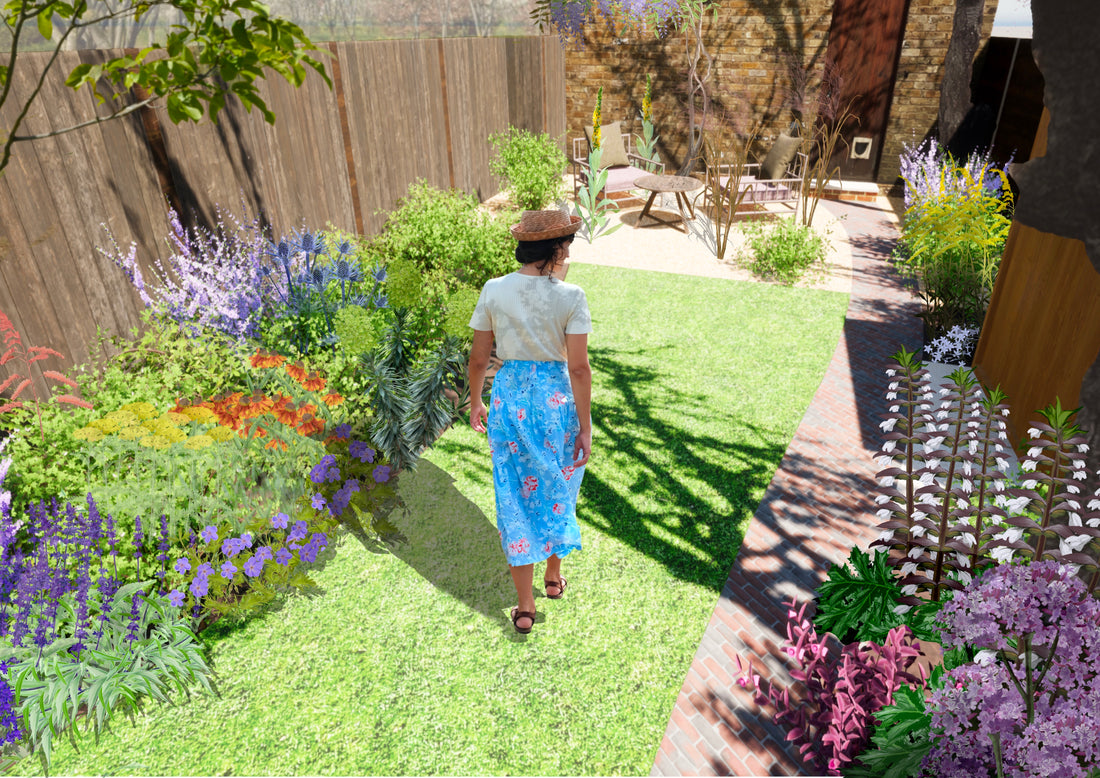
Procreate and SketchUp for Garden Designers
Share
John Wood is a garden designer, CPD tutor for the Society of Garden Designers and regular contributor of articles and features on CAD, 3D modelling and rendering in landscape and garden design. We're glad to have caught up with John and learn how his latest design work in Procreate is slotting seamlessly into his CAD workflow, with stunning results.
Drawing on an iPad in Procreate is a new discovery for me. What I love about it is the fact that it has all of the digital capabilities of Photoshop, with the remarkable advantage of drawing directly onto the screen. It’s this immediacy which completely transforms the feel of digital rendering and frees up a whole range of possibilities, both creative and practical.

I work on an iPad Air, small enough to slip into a coat pocket. This gives me the freedom of being able to sketch an idea anywhere at any time, and although it might feel just like drawing on a conventional sketchpad, one is constantly connected to a vast resource of computer technology. The lightest touch on the vast range of menu options transforms the pencil in one’s hand into a paintbrush, a technical pen or pencil with a near infinite range of colours and textures to choose from. This all happens smoothly and easily, allowing for a fluent, creative workflow, where the user interface is beautifully simple and intuitive.

Procreate works in numerous ways to support our work as garden designers. A single click transforms Procreate into a technical drawing tool, locking in vertical, horizontal or isometric lines when working on technical construction drawings with all the precision of conventional CAD. Technical plans can, of course, be imported from other programmes and then worked on in Procreate. They can be worked on technically or creatively as, for example, when producing a watercolour render of a planting plan.

In my own garden design practice, I’m constantly discovering new methods of working with Procreate which allow for a far easier and more fluid workflow. I find Procreate interacts fluently with other programmes I use, particularly when it comes to SketchUp. Ever since becoming entirely digital, having switched from a conventional drawing board some years ago, SketchUp has always been my go-to design tool. When it comes to fast, intuitive modelling in 3-D, SketchUp is second to none. As with other CAD software though, the one area where SketchUp is perhaps lacking is in high quality plant libraries, and in particular plant libraries which are suited to the herbaceous borders of a northern temperate climate. In the past, I’ve often found trying to produce convincing visuals of a planted garden challenging.
Working on Procreate, one of my most rewarding discoveries is that one can draw a plant, an idealised plant, much in the style of botanical illustration, and then import these drawings into SketchUp where they work surprisingly well as .png face-me components.
 Although this is entirely freehand, the computer’s ability to duplicate and manipulate imagery with such ease makes the process of producing a hand rendered illustration like this incalculably faster than conventional drawing.
Although this is entirely freehand, the computer’s ability to duplicate and manipulate imagery with such ease makes the process of producing a hand rendered illustration like this incalculably faster than conventional drawing.

Plants drawn first in Procreate and then dropped into SketchUp in png format to become Sketchup Face-me components. These can then be saved to your SketchUp component library and shared amongst the design community via the 3D Warehouse.
So, the quality of the final visualisation can be vastly improved. in horticultural and botanical terms. by feeding work done in Procreate directly into the SketchUp model or adding these drawings to one’s final presentation images at the post production stage.
 SketchUp model rendered in Twinmotion with herbaceous planting created in Procreate and then added to the borders. All ‘post production’ in this render has been carried out in Procreate following near identical processes as Photoshop.
SketchUp model rendered in Twinmotion with herbaceous planting created in Procreate and then added to the borders. All ‘post production’ in this render has been carried out in Procreate following near identical processes as Photoshop.
Procreate inspires experimentation, and the more I work with it the more I realise its potential. The ease with which one can produce digitally versatile plants is opening enormous possibilities for horticultural specificity when it comes to modelling and rendering our gardens 
You can follow John's work on Instagram and also view a schedule of his upcoming Society of Garden Designers CPD training modules here.
